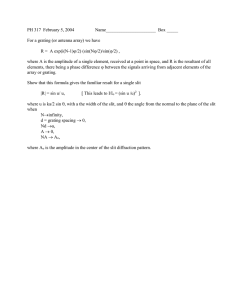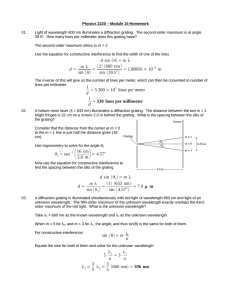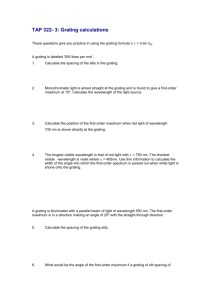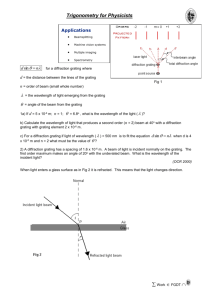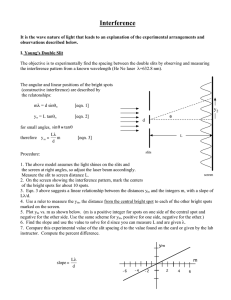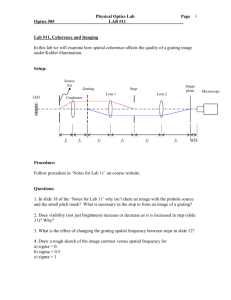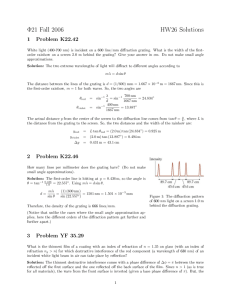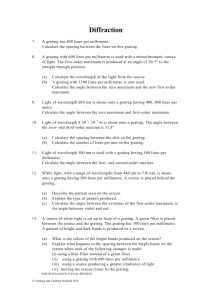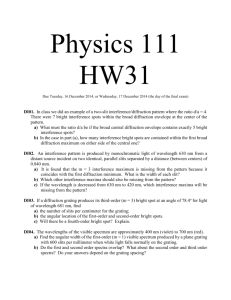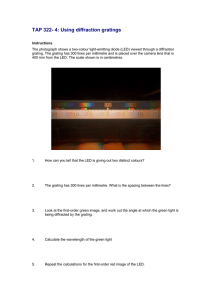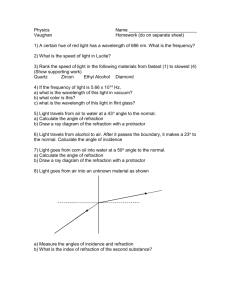Physics Challenge Question 1: Solutions
advertisement
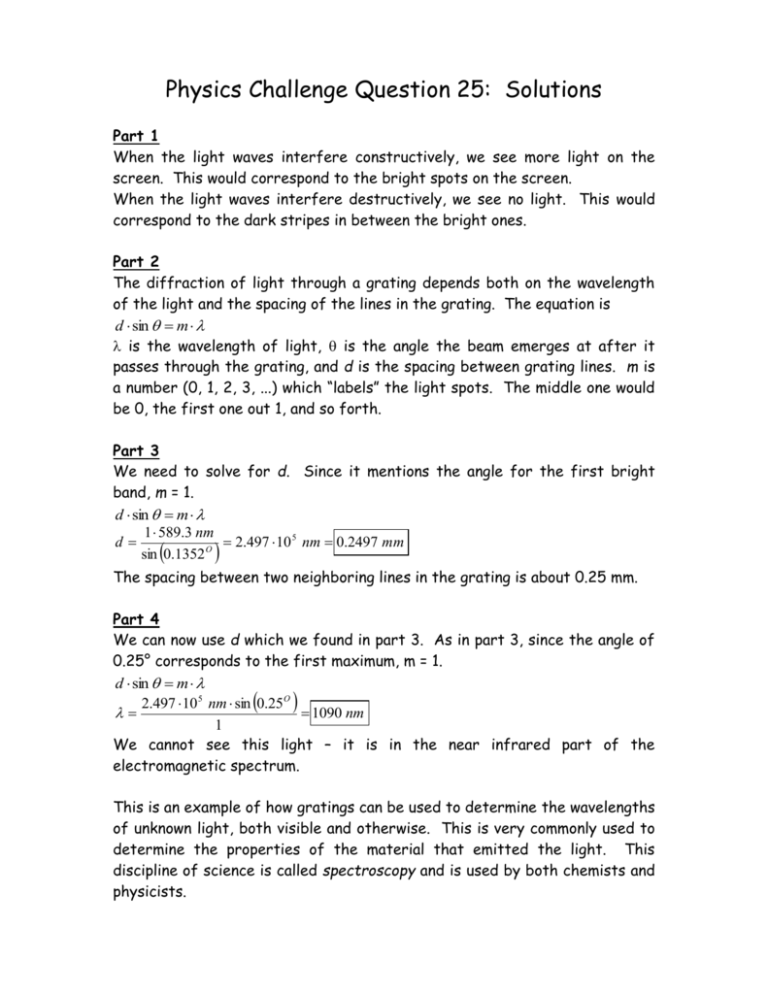
Physics Challenge Question 25: Solutions Part 1 When the light waves interfere constructively, we see more light on the screen. This would correspond to the bright spots on the screen. When the light waves interfere destructively, we see no light. This would correspond to the dark stripes in between the bright ones. Part 2 The diffraction of light through a grating depends both on the wavelength of the light and the spacing of the lines in the grating. The equation is d sin m is the wavelength of light, is the angle the beam emerges at after it passes through the grating, and d is the spacing between grating lines. m is a number (0, 1, 2, 3, ...) which “labels” the light spots. The middle one would be 0, the first one out 1, and so forth. Part 3 We need to solve for d. Since it mentions the angle for the first bright band, m = 1. d sin m 1 589.3 nm d 2.497 10 5 nm 0.2497 mm O sin 0.1352 The spacing between two neighboring lines in the grating is about 0.25 mm. Part 4 We can now use d which we found in part 3. As in part 3, since the angle of 0.25° corresponds to the first maximum, m = 1. d sin m 2.497 10 5 nm sin 0.25O 1090 nm 1 We cannot see this light – it is in the near infrared part of the electromagnetic spectrum. This is an example of how gratings can be used to determine the wavelengths of unknown light, both visible and otherwise. This is very commonly used to determine the properties of the material that emitted the light. This discipline of science is called spectroscopy and is used by both chemists and physicists.
